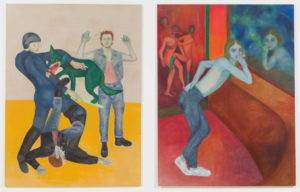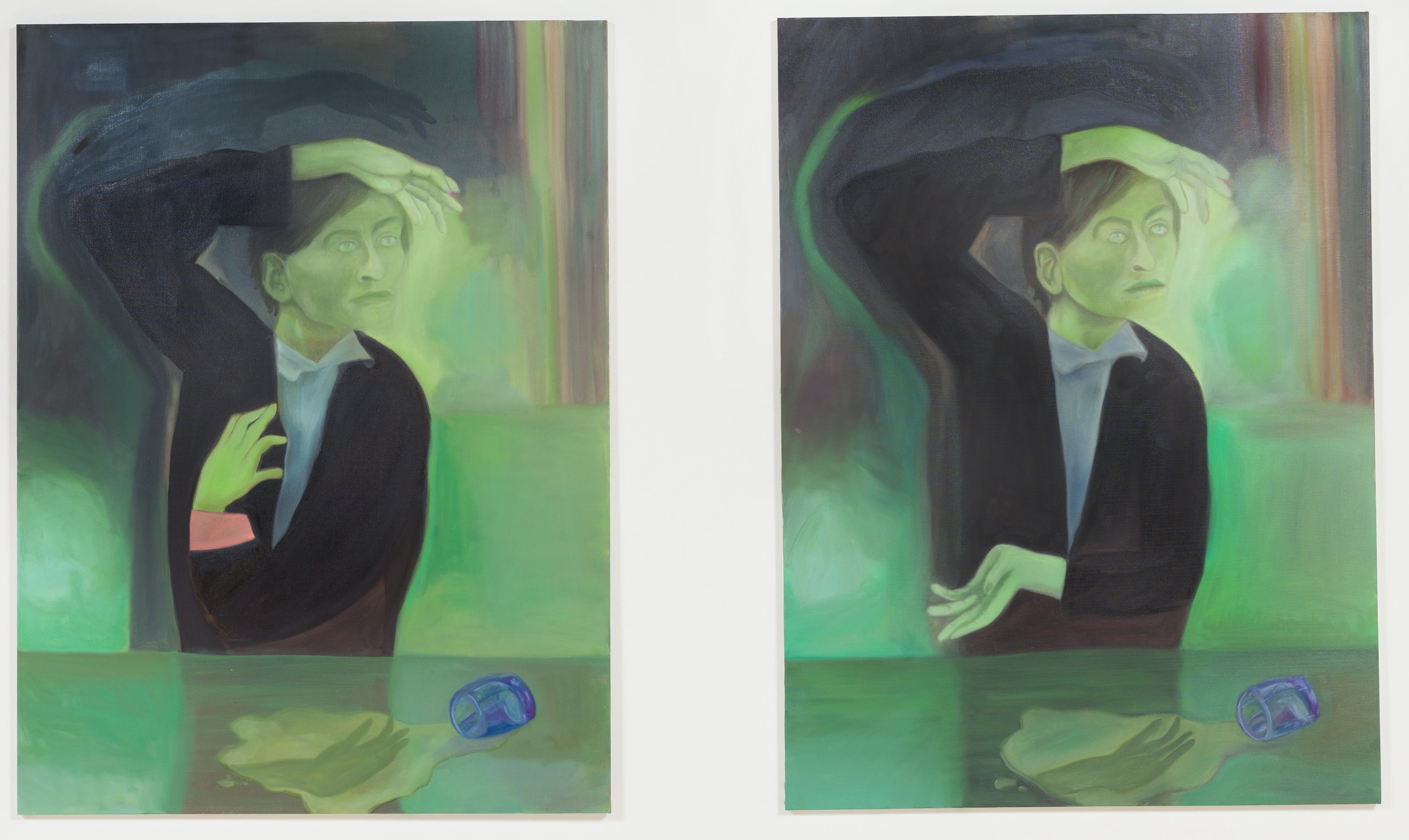Jill Mulleady’s new paintings offer an experience akin to tumbling down a rabbit hole into a mad and decadent party orchestrated by the Surrealists (is that a cheetah sitting at the counter? A policeman fighting a green coyote?) and attended by reveling sinners, dreamers and eccentrics inspired by the creations of artists past and present. The paintings are glorious, sensual amalgams of the banal and the magical, titillating and confounding viewers no doubt desperate to escape the increasingly troubled contemporary world.
Mulleady favors interior scenes such as bars and lounges, spaces where people can be alone while among others, where the ordinary can tip into the extraordinary. In Made in the Shade (all works 2017), a surreal nod to Hopper’s Nighthawks, a glum Martin Kippenberger broods while a goose and a cheetah perch nearby. A sinuous, androgynous figure rendered in shades of cool blue languidly leans against a bar counter in Prince S, his reflection in the mirror reminiscent of Manet’s melancholy barmaid. In contrast, the walls, floor and naked figures twisting in orgiastic pleasure behind him are painted in veils of fiery red and orange, heightening the sense of bizarreness. Kleptocracy is populated with a handful of improbable female figures—an armor-clad serpent-slayer; a woman coiled in the corner; another staring off into space, her red dress clashing wildly with her green skin; and a severe woman in black, seemingly ossified in her upright position.

Jill Mulleady, Prince S, I (2017); The Green Room, II (2017), ©Jill Mulleady, courtesy of the artist and Freedman Fitzpatrick Gallery, Los Angeles.
The sense of magic and mesmerism, of slippages between the realms of the sublunary and the spiritual, is perhaps most apparent in three works all painted primarily in shades of sickly, absinthe green. In A thousand natural shocks, an alluring and mysterious woman in a blue and red dress with a top hat holds small pills, surrounded by empty bottles. Her form is almost transparent, and her actual shadow, which holds an unseen pistol, lurks ominously behind. The Green Room I and The Green Room II are nearly identical scenes of a seated man performing trepanation on himself to extract a “stone of madness.” A spilled drink and creeping shadow of the man’s contorted arm, combined with his ghostly, passive expression, result in truly enigmatic works. The very slight differences between the two canvases—the tilt of the hand, the color of the bottle—coupled with the use of the same figure in three colorful woodcuts hanging nearby (A sun for the sleeper I, II, and III) evokes the obsessive aesthetics of the Surrealists; it elicits the sensation of having the same dream over and over again.
Even the smallest, most seemingly ordinary work in the show, Spray la vie, is tinged with the mysterious. A collection of dirty dishes in a sink is made perplexing by the addition of a tiny ceramic house, while the artist’s (or our?) “reflection” appears in the gleaming faucet. Mulleady’s work thus pushes us to cleanse our doors of perception and arrive at a place where we can see the infinite in the finite and the mystical in the mundane.



















0 Comments